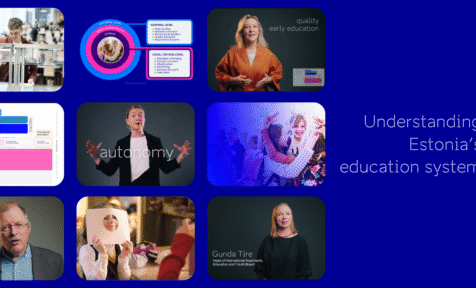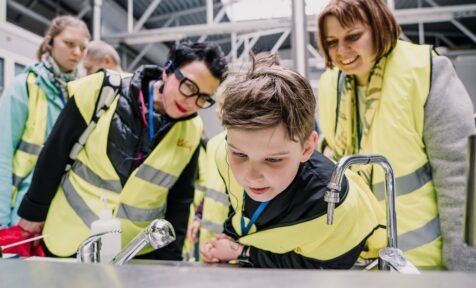Estonia’s AI Leap brings artificial intelligence to classrooms, but it’s teachers who will make it work.
This is a shortened version of an article by Marian Männi, first published on the Research Estonia webpage.
At the beginning of this year, Estonia’s President Alar Karis announced Estonia’s AI Leap. The plan is to bring ChatGPT Edu into schools, the first such attempt in the world. While the tech gets all the attention, something more important is changing: how students think.
“We are moving from factual knowledge towards more reasoned thinking,” says Kairit Tammets, the lead researcher in a project called Model-based Learning Analytics for Fostering Students’ Higher-order Thinking Skills.
These higher-order skills go beyond memorising facts. They include analysing, solving problems, arguing, and thinking for yourself. “These skills are the core of our professional and everyday life,” says Tammets. “They give us the ability to distinguish the sources, make decisions, and manage ourselves.”
Start with the teachers
Tammets believes that real change starts with teachers. “Teachers need time to get used to the change. They have to experience the value of new ways of thinking in order to implement them,” she says. During the research, Tammets noticed that even if the teachers know their subject very well, they need extra support to design exercises that would foster students’ deeper thinking. Sometimes, the changes needed to reach deeper thinking levels can be really small. “For example, you ask students to give a reason, pick a strategy or come up with a counterargument,” explains Tammets.
AI is coming to class
While the research continues, Estonia’s Ministry of Education is preparing hundreds of teachers to use AI in schools. More than 120 schools have already signed up for workshops.
Teachers will learn how to work with AI to support real learning. A recent study co-authored by Tammets shows that AI systems are most useful when they help teachers notice how students are learning and offer insights they can act on. Instead of just tracking clicks or scores, these systems need to show what’s behind a student’s struggle, and suggest what to do next.
But the study also found that most current tools fall short. Many ignore important things like collaboration or how students reflect. If AI is to help, it must support the teacher’s decisions, not replace them. When done right, it can sharpen how teachers guide learning.
Why it matters
“A fast-changing world demands adapting; it requires creativity, the ability to communicate the problems, choose strategies, and make ethical decisions,” says Tammets.
If students don’t build strong thinking skills, “it can happen that students are using AI superficially or can only copy the answers with its help, instead of analyzing the solutions and being able to evaluate them critically.” Estonia already has good digital tools and modern teaching. But there’s room to grow.
This is not just an Estonian issue. Estonian education experts are bringing their knowledge to other countries, too, to integrate digital tools into the educational system. Estonia already has a strong digital infrastructure and learner-centred teaching. And internationally, very good study results. The system is flexible and built around digital solutions.
But flashy tools mean little without meaningful tasks. That’s where there is still room to grow.
Should we forget facts completely? Tammets says no. “There should be a balance in learning: first, you create a solid foundation, and on that you design higher-order thinking skills.”
Because thinking skills give facts meaning. Only this way can we create lasting knowledge.



